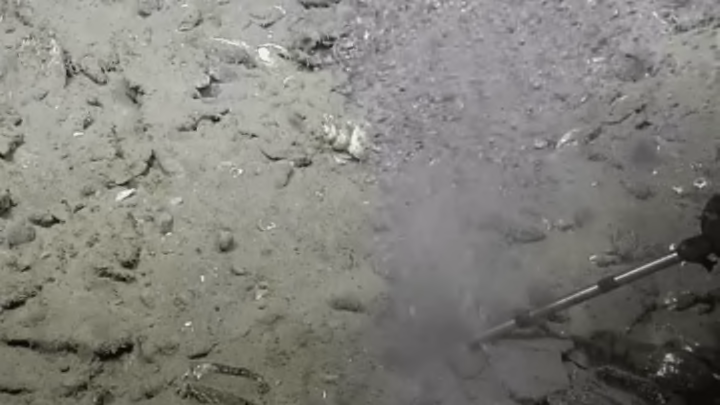Scientists Discover Hundreds of Deep-Sea Methane Vents off West Coast

Explorers have exhaustively mapped the world’s landmasses, but the ocean floor is still largely a mystery. According to one estimate, we’ve canvassed less than 5 percent of its depths. But recently, New Scientist reports, marine experts discovered an intriguing new feature off America’s western seaboard: 500 bubbling methane vents, which about doubles the known number of such vents found along the continental margins of the United States.
Robert Ballard, of RMS Titanic fame, made the discovery while conducting summer expeditions on his ship, Nautilus. "It appears that the entire coast off Washington, Oregon, and California is a giant methane seep," said Ballard, who serves as the founder and director of the Ocean Exploration Trust in Connecticut, in a news release.
Experts are still trying to figure out precisely what the bubbles are made of, and are analyzing them to determine which gases they contain. Similar sites have yielded methane, but Robert Embley, chief scientist on the Nautilus, said there’s a chance that methane hydrate, which is made from water and methane, could also be present.
As the methane vents reveal clues about our mysterious oceans, they might also tell us more about climate change. Methane traps heat 40 times more efficiently than carbon dioxide, so scientists want to find out how much of it is seeping from the vents, making its way into the atmosphere, and having an impact on global warming.
"This is an area ripe for discovery," said Nicole Raineault, director of science operations with Ballard's Ocean Exploration Trust, in a statement. "We do not know how many seeps exist, even in U.S. waters, how long they have been active, how persistent they are, what activated them or how much methane, if any, makes it into the atmosphere."
The researchers plan to present the discovery this week at the National Ocean Exploration Forum—and after that, they want to find out how much methane is coming from the seafloor. They also hope to find more vents off the East Coast and map them to broaden their existing knowledge of the sites. You can watch the vents spew in the video below, filmed by the Nautilus.
[h/t New Scientist]
Know of something you think we should cover? Email us at tips@mentalfloss.com.